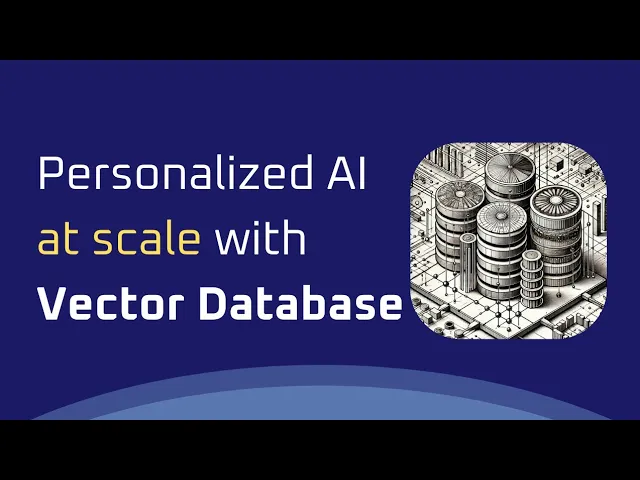From Memory to Database Scaling Your AI Document Retrieval Strategy
Many AI projects begin with a simple approach to document retrieval – loading documents directly into memory and performing operations there. While this works for proofs of concept or small applications, the transition to production-scale systems requires a fundamental shift in strategy. Understanding this evolution from memory-based to database-driven approaches is crucial for anyone building document-enhanced AI systems. For comprehensive implementation guidance, explore my complete RAG systems tutorial.
The Limitations of In-Memory Document Processing
When first implementing document retrieval for AI applications, the simplicity of in-memory processing is appealing. Load your documents, create embeddings, store them locally, and search through them when needed. This approach works surprisingly well for small collections and proof-of-concept systems.
However, as document collections grow, in-memory systems face significant challenges:
- Memory constraints limit the number of documents you can process
- Search operations slow down as the collection expands
- Document updates require reprocessing entire collections
- Scaling across multiple instances becomes increasingly complex
- System restarts require reloading all documents from storage
These limitations become particularly apparent when moving from hundreds to thousands or millions of documents – a common trajectory for successful AI applications.
The Conceptual Shift to Database-Driven Retrieval
Moving to a vector database represents more than just a technical implementation change – it’s a fundamental shift in how we approach document retrieval. This transition requires rethinking several aspects of the system:
- From loading to querying: Instead of pulling all documents into memory, the system needs to efficiently query only what’s relevant
- From rebuilding to updating: The system must support continuous updates without rebuilding indexes
- From single-instance to distributed: The architecture must allow for distribution across multiple servers
- From monolithic to service-oriented: Document retrieval becomes a dedicated service rather than an embedded function
This conceptual shift aligns with broader principles of production system design, where specialized components handle specific functions at scale.
Enabling Enterprise-Scale Document Handling
Vector databases unlock capabilities that make enterprise-scale document handling possible. Learn the fundamentals in my vector databases explained guide:
Increased Document Capacity: Vector databases can handle millions or even billions of documents, far beyond what’s possible with in-memory solutions.
Performance at Scale: Through specialized indexing techniques, vector databases maintain query performance even as collections grow massively.
High Availability: Many vector database solutions support replication and failover, ensuring continuous operation even during hardware failures.
Concurrent Access: Multiple AI instances can simultaneously query the same document collection without conflicts.
Incremental Updates: Documents can be added, updated, or removed without rebuilding the entire system.
These capabilities transform what’s possible with document-enhanced AI, enabling applications that would be completely impractical with in-memory approaches.
Strategic Approaches to Document Organization
Beyond the technical transition, moving to a database-driven approach enables more sophisticated document organization strategies:
Hierarchical Collections: Documents can be organized into collections and subcollections for more targeted retrieval.
Metadata Filtering: Additional document attributes can be used to narrow search spaces before similarity comparisons.
Multi-Modal Retrieval: Some vector databases support both semantic similarity and traditional filtering in unified queries.
Versioning and History: Changes to documents can be tracked, allowing for point-in-time retrieval or analysis of changes.
These organizational capabilities provide greater flexibility in how AI systems interact with document collections, enabling more precise information retrieval.
Planning Your Migration Path
For teams currently using in-memory document retrieval, planning a thoughtful migration to vector databases involves considering:
- Which vector database aligns with your specific use cases and constraints
- How to transition documents without disrupting existing services
- Whether to handle document processing separately or rely on database features
- How to validate retrieval quality across both systems during transition
The right approach will depend on your specific circumstances, but understanding the conceptual differences between these approaches is the essential first step. For advanced production considerations, see my guide to production-ready RAG systems.
To see exactly how to implement these concepts in practice, watch the full video tutorial on YouTube. I walk through each step in detail and show you the technical aspects not covered in this post. If you’re interested in learning more about AI engineering, join the AI Engineering community where we share insights, resources, and support for your journey. Turn AI from a threat into your biggest career advantage!

